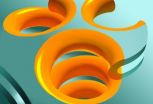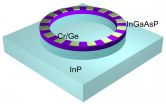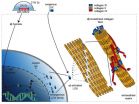(Press-News.org) Soon, many will turn back the hands of time as part of the twice-annual ritual of daylight saving time. That means remembering to change the alarm clock next to the bed, which will mean an extra hour of sleep before getting up in the morning.
But for some diabetics who use insulin pumps, Saleh Aldasouqi, associate professor of medicine at Michigan State University, suggests that remembering to change the time on this device should be the priority.
"Some diabetes patients who use insulin pumps may forget to change the clock that is found in these devices," said diabetes expert Aldasouqi. "Forgetting to change the time can result in insulin dosing errors that can be harmful."
His article can be found in the November issue of the Journal of Diabetes Science and Technology.
Dosing errors could cause too little or too much insulin being delivered at the right time for these patients.
Too much insulin produces hypoglycemia, which could be severe and trigger seizures, fainting spells or coma. Hyperglycemia is a result of too little insulin being delivered and in the short term isn't as harmful as hypoglycemia. Early effects of hyperglycemia may include tiredness and frequent urination, yet longer-term effects could cause the body to become acidic, known as diabetic ketoacidosis, and could also produce life-threatening complications.
Aldasouqi said he's had a number of patients come into his office who have forgotten to make the time change or in other cases, haven't adjusted the clock after changing the pump battery. He's also come across additional issues in his research such as health providers finding incorrect a.m. and p.m. settings.
"At this point, I haven't seen a fatal error occur, but why wait?" he said. "That's why it's important to raise awareness about this issue now and encourage physicians and patients alike to make sure these clocks are set up correctly at all times."
There are two forms of insulin delivery methods, basal and bolus. Basal insulin therapy helps patients with diabetes control blood sugar in steady amounts throughout the day and night, while bolus therapy releases insulin in bursts around meals.
A major concern is those receiving the bolus therapy may be affected more significantly if timing is off.
"Since this delivery method is timed around meals, if a patient eats lunch around noon, they'll get their burst of insulin at the wrong time," he said. "If it's too much or too little, it could send them to the hospital or worse."
Currently, insulin pump technology lags behind and doesn't have clocks that automatically adjust. GPS technology could be used to help solve this problem, but is considered controversial due to privacy concerns.
For now, Aldasouqi said the responsibility is on the patient and also on the medical community to educate patients and make sure pumps are set correctly.
"The implications of remembering to change the clock in these devices means so much more than just remembering to adjust the alarm clock for that extra hour of sleep," he said. "As a physician, I'm going to do what I can to make sure patients are safe."
INFORMATION:
Michigan State University has been working to advance the common good in uncommon ways for more than 150 years. One of the top research universities in the world, MSU focuses its vast resources on creating solutions to some of the world's most pressing challenges, while providing life-changing opportunities to a diverse and inclusive academic community through more than 200 programs of study in 17 degree-granting colleges.
Could daylight saving time be a risk to diabetics?
2014-10-30
ELSE PRESS RELEASES FROM THIS DATE:
They know the drill: UW leads the league in boring through ice sheets
2014-10-30
MADISON, Wis. — Wisconsin is famous for its ice fishers — the stalwarts who drill holes through lake ice in the hope of catching a winter dinner. Less well known are the state's big-league ice drillers — specialists who design huge drills and use them to drill deep into ice in Greenland and Antarctica, places where even summer seems like winter.
The quarry at these drills includes some of the biggest catches in science.
A hot-water drill designed and built at the University of Wisconsin-Madison's Space Science and Engineering Center (SSEC) and the ...
New optimal screening threshold for gestational diabetes in twin pregnancies
2014-10-30
Philadelphia, PA, October 30, 2014 – A common complication, gestational diabetes affects approximately 6-7% of pregnant women. Currently, screening is done in two steps to help identify patients most at risk; however, the suggested levels for additional testing were based on singleton pregnancy data. Now investigators have analyzed data from twin pregnancies and have determined that the optimal first step cutoff for additional screening appears to be a blood sugar level equal to or greater than 135 mg/dL for women carrying twins. Their findings are published in the ...
For stroke patients, hospital bed position is delicate balancing act
2014-10-30
MAYWOOD, Ill. (Date) – During the first 24 hours after a stroke, attention to detail --such as hospital bed positioning -- is critical to patient outcomes.
Most strokes are caused by blood clots that block blood flow to the brain. Sitting upright can harm the patient because it decreases blood flow and oxygen to the brain just when the brain needs more blood.
Thus, it's reasonable to keep patients lying flat or as nearly flat as possible, according to a report in the journal MedLink Neurology by Loyola University Medical Center neurologist Murray Flaster, MD, ...
Biology meets geometry
2014-10-30
(Santa Barbara, Calif.) — Architecture imitates life, at least when it comes to those spiral ramps in multistory parking garages. Stacked and connecting parallel levels, the ramps are replications of helical structures found in a ubiquitous membrane structure in the cells of the body.
Dubbed Terasaki ramps after their discoverer, they reside in an organelle called the endoplasmic reticulum (ER), a network of membranes found throughout the cell and connected to and surrounding the cell nucleus. Now, a trio of scientists, including UC Santa Barbara biological physicist ...
Heart's own immune cells can help it heal
2014-10-30
The heart holds its own pool of immune cells capable of helping it heal after injury, according to new research in mice at Washington University School of Medicine in St. Louis.
Most of the time when the heart is injured, these beneficial immune cells are supplanted by immune cells from the bone marrow, which are spurred to converge in the heart and cause inflammation that leads to further damage. In both cases, these immune cells are called macrophages, whether they reside in the heart or arrive from the bone marrow. Although they share a name, where they originate appears ...
Study shows vibrating insoles could reduce falls among seniors
2014-10-30
BOSTON — Findings published in the Archives of Physical Medicine and Rehabilitation show that imperceptible vibratory stimulation applied to the soles of the feet improved balance by reducing postural sway and gait variability in elderly study participants. The vibratory stimulation is delivered by a urethane foam insole with embedded piezoelectric actuators, which generates the mechanical stimulation. The study was conducted by researchers from the Institute for Aging Research (IFAR) at Hebrew SeniorLife, Beth Israel Deaconess Medical Center, the Wyss Institute for ...
Lord of the microrings
2014-10-30
A significant breakthrough in laser technology has been reported by the U.S. Department of Energy (DOE)'s Lawrence Berkeley National Laboratory (Berkeley Lab) and the University of California (UC) Berkeley. Scientists led by Xiang Zhang, a physicist with joint appointments at Berkeley Lab and UC Berkeley, have developed a unique microring laser cavity that can produce single-mode lasing even from a conventional multi-mode laser cavity. This ability to provide single-mode lasing on demand holds ramifications for a wide range of applications including optical metrology and ...
Making lab-grown tissues stronger
2014-10-30
Lab-grown tissues could one day provide new treatments for injuries and damage to the joints, including articular cartilage, tendons and ligaments.
Cartilage, for example, is a hard material that caps the ends of bones and allows joints to work smoothly. UC Davis biomedical engineers, exploring ways to toughen up engineered cartilage and keep natural tissues strong outside the body, report new developments this week in the journal Proceedings of the National Academy of Sciences.
"The problem with engineered tissue is that the mechanical properties are far from those ...
Experts recommend tumor removal as first-line treatment for acromegaly
2014-10-30
Washington, DC—The Endocrine Society today issued a Clinical Practice Guideline (CPG) for the diagnosis and treatment of acromegaly, a rare condition caused by excess growth hormone in the blood.
The CPG, entitled "Acromegaly: An Endocrine Society Clinical Practice Guideline," appeared in the November 2014 issue of the Journal of Clinical Endocrinology and Metabolism (JCEM), a publication of the Endocrine Society.
Acromegaly is usually caused by a non-cancerous tumor in the pituitary gland. The tumor manufactures too much growth hormone and spurs the body to overproduce ...
Sustained local control for medically inoperable, early stage lung cancer patients
2014-10-30
Chicago, October 30, 2014—Analysis of data from an institutional patient registry on stereotactic body radiotherapy (SBRT) indicates excellent long-term, local control, 79 percent of tumors, for medically inoperable, early stage lung cancer patients treated with SBRT from 2003 to 2012, according to research presented today at the 2014 Chicago Multidisciplinary Symposium in Thoracic Oncology. The Symposium is sponsored by the American Society of Clinical Oncology (ASCO), the American Society for Radiation Oncology (ASTRO), the International Association for the Study ...




